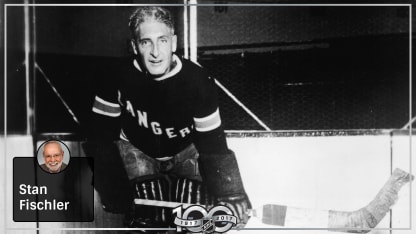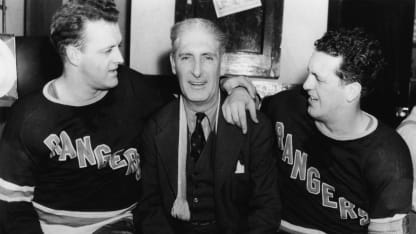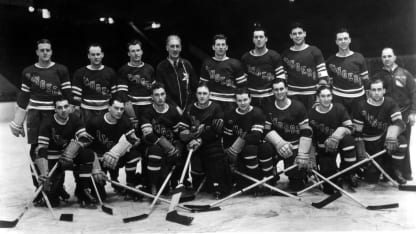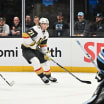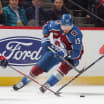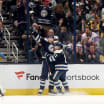"Go on, Lester," urged the big, gravel-throated Burchard, "show 'em what you're made of."
Burchard's idea made some sense. Just for fun, Lester had played some goal during Rangers scrimmages, so he did have a bit of experience. A few of his players felt Lester could do the job. Suddenly, he startled the onlookers.
"OK," he muttered, "I'm going to do it."
Lester diligently strapped on Chabot's bloodstained pads.
"OK, gang. Let's go," he shouted as he headed for the ramp leading to the ice.
A muffled chorus of oohs and ahhs came from the crowd when Patrick made his way to the net for the traditional practice shots.
Realizing the hopelessness of the situation, the Rangers attempted to bolster Lester's spirit, as well as their own, by pumping some shots at his pads. Maybe, they felt, if he stopped a few in practice, he would think he could stop a few in the game. The referee signaled the resumption of the match, and Patrick rapped his pads in the symbolic goaltending gesture of readiness.
Finally the puck was dropped, and the Rangers pounced. They scarcely let the Maroons touch it, and when Montreal did manage to get off a shot at Patrick, he tamed it away. Somehow, Patrick shut out the Maroons in the second period, and the score was still tied 0-0.
All of a sudden, the Patrick ploy no longer seemed like a joke. His decision to play goal was a catalyst for the Rangers, and they returned to the ice for the third period more determined than ever. Within fifty seconds, Bill Cook had barreled through the Maroons defense and lifted the puck past goalie Clint Benedict.
But Montreal wasn't about to give up so easily.
The Maroons counterattacked more fiercely than ever, yet the old "Silver Fox" stood his ground, groaning with every kick-save that strained his aging physique. At last, with 5:40 remaining, Lester cracked. Nels Stewart skirted the Rangers defense, feinted once, and skimmed the puck past Patrick to make it 1-1.
Lester held fast after that as the clock ticked its way to the conclusion of regulation. Then, it was sudden-death overtime. Montreal was counting on the ancient Lester to fold in the stretch. After all, there was just so much he could take. But somehow, Patrick managed to foil the Maroons in the early minutes of the overtime, and soon the momentum -- so often happens in the kaleidoscopic game of hockey -- tilted in the Rangers' favor.
Frank Boucher, their creative center, captured the puck and made his way up the ice. He zigzagged past a Maroons defenseman and swerved toward the goal. Benedict crouched as Boucher cruised in. The shot was hard and low and the puck flew past the Maroons goalie.
